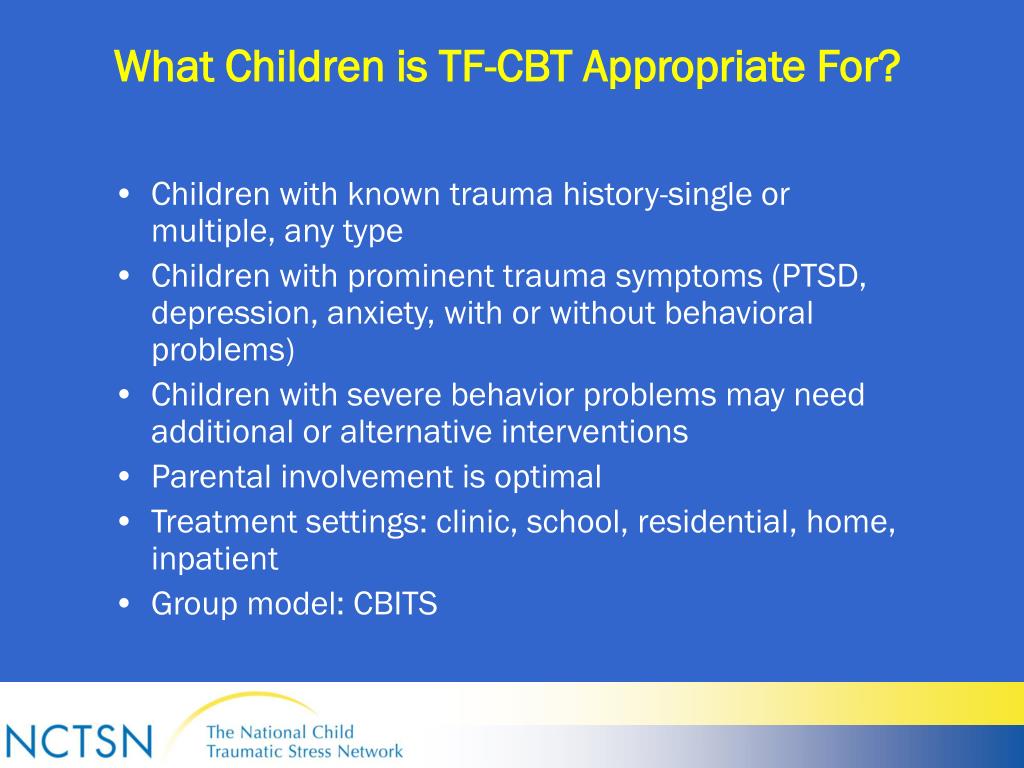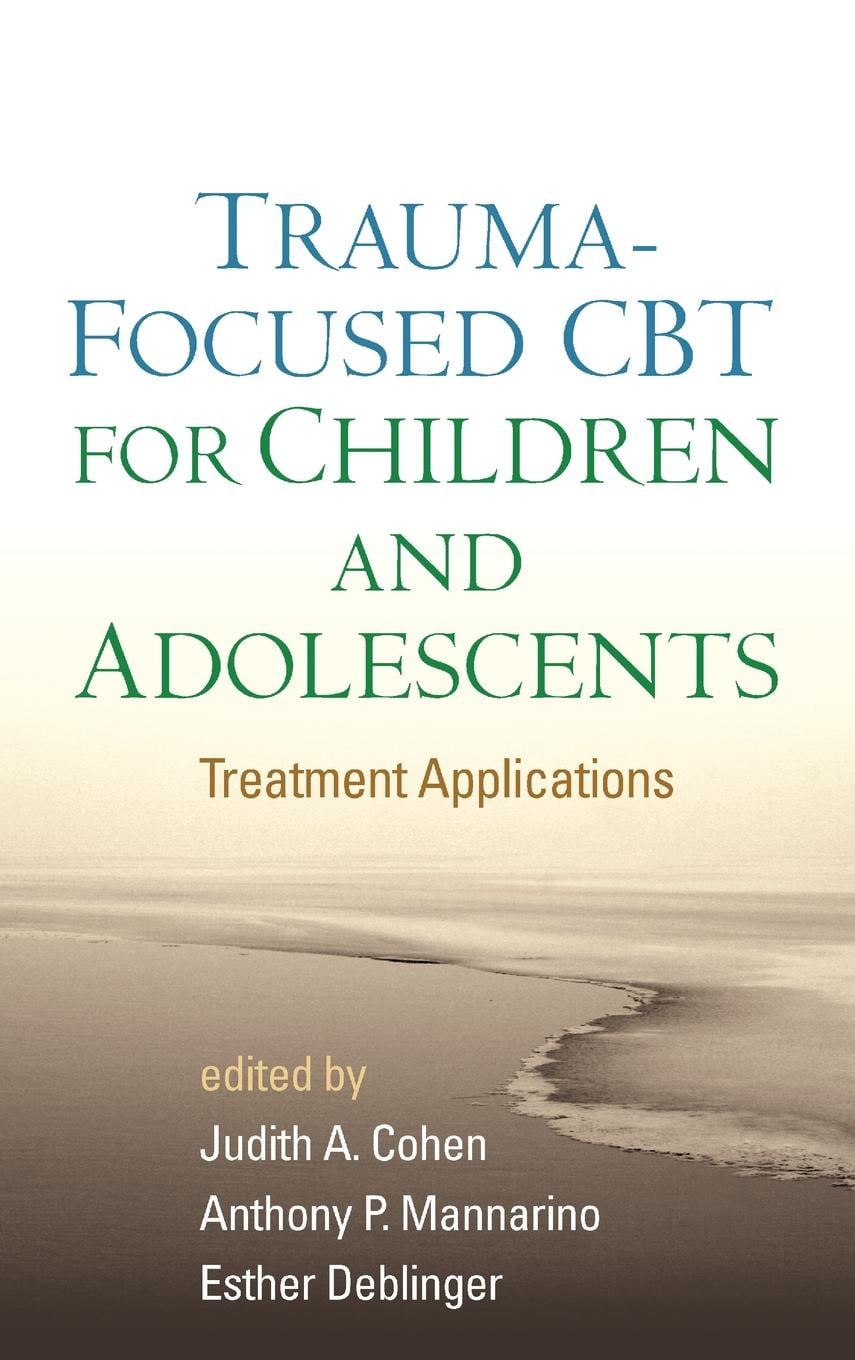

Wiley, New York, NYīeck AT, Rush AJ, Shaw BE et al (1979) Cognitive therapy of depression. Mowrer OH (1960) Learning theory and the symbolic processes. Murray LK, Skavenski S, Kane JC et al (2015) Effectiveness of trauma-focused cognitive-behavioral therapy among trauma-affected children in Lusaka, Zambia: a randomized clinical trial. In: Cohen JA, Mannarino AP, Deblinger E (eds) Trauma-focused CBT for children and adolescents: Treatment applications. Guilford Press, New York, NYĭe Arellano MA, Danielson CK, Felton JW (2012) Children of Latino descent: culturally modified TF-CBT.

J Child Psychol Psychiatry 52:853–860īigfoot DS, Schmidt SR (2012) American Indian and Alaska Native children: honoring children-mending the circle. Scheeringa MS, Weems CF, Cohen JA et al (2011) Trauma-focused cognitive-behavioral therapy for posttraumatic stress disorder in three-through six year-old children: a randomized clinical trial. Arch Pediatr Adolesc Med 165:16–21ĭeblinger E, Lippmann J, Steer RA (1996) Sexually abused children suffering posttraumatic stress symptoms: initial treatment outcome findings. J Am Acad Child Adolesc Psychiatry 35:42–50Ĭohen JA, Mannarino AP, Iyengar S (2011) Community treatment of posttraumatic stress disorder for children exposed to intimate partner violence. J Am Acad Child Adolesc Psychiatry 49:414–430Ĭohen JA, Mannarino AP (1996) A treatment outcomes study for sexually abused preschool children: initial findings. Child Maltreat 17:11–21Ĭohen JA, The Work Group on Quality Issues (2010) Practice parameter for the assessment and treatment of children and adolescents with posttraumatic stress disorder. Guilford Press, New York, NYĪllen B, Gharagozloo L, Johnson JC (2012) Clinician knowledge and utilization of empirically-supported treatments for maltreated children. However, in cases of severe intellectual disability, neurocognitive disability, neurodevelopmental disorder, autism spectrum disorder, or other problems that make it impossible for someone to benefit from a cognitive therapy, TF-CBT is not indicated.Cohen JA, Mannarino AP, Deblinger E (2017) Treating trauma and traumatic grief in children and adolescents, 2nd edn. TF-CBT can be used with children and youth who have intellectual, cognitive, or other developmental problems if their level of functioning allows them to engage in and benefit from a cognitive therapy. If a child does not have clinically significant problems related to traumatic events, TF-CBT is not indicated. Consequently, they may not have significant mental health symptoms related to those experiences.

Some children are highly resilient, possess effective coping skills, and have strong familial and social support systems to help them manage potentially traumatic experiences effectively. If a child does not have a known history of traumatic events, TF-CBT is not indicated. Every effort should be made to locate and engage a supportive parent or other caregiver in the treatment process. While TF-CBT can be done with children without a supportive caregiver, substantial parts of the treatment will be lost. Parent/Caregiver Involvement: Having a supportive parent or other caregiver such as a grandparent, other kinship caregiver, or foster parent involved in treatment is highly desirable.Co-morbid Diagnoses: TF-CBT can be used successfully with traumatized children and youth with co-occurring difficulties such as ADHD, oppositional defiant disorder, and conduct disorder.Other Trauma-related Problems: Children may have other trauma-related problems such as depression, anxiety, fear, shame, self-blame, behavior problems, sexual behavior problems, or traumatic grief.Research has found that children consistently experiencing 4 or more PTSD symptoms can benefit from TF-CBT.

#TRAUMA FOCUSED CBT FULL#
The child does not have to meet full diagnostic criteria for PTSD.


 0 kommentar(er)
0 kommentar(er)
